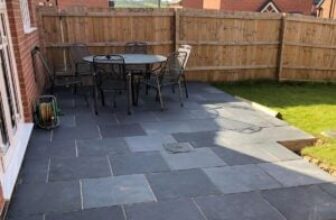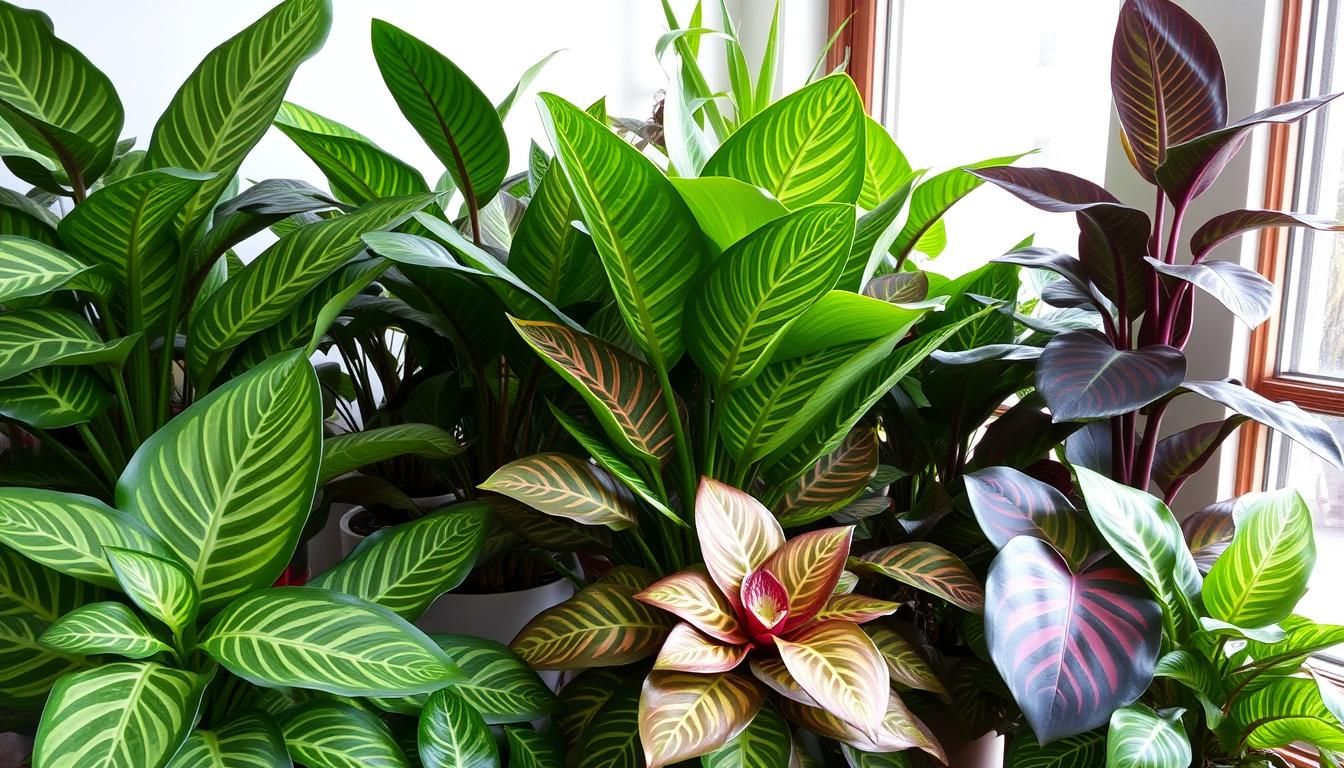
Are you drawn to the unique leaf patterns and bright colors of calathea couture plants? These plants, part of the Marantaceae family, are also known as “prayer plants.” They’re loved for their beauty and interesting behaviors. But, do you know how to keep these tropical plants happy in your home?
Key Takeaways:
- Calatheas come in many shapes, sizes, and colors, making them great indoor plants.
- They need high humidity and a damp place because they come from tropical rainforests.
- Calatheas do well in indirect bright light, fitting well in many indoor spots.
- It’s important to water them right and make sure the soil drains well for their health.
- Calatheas are safe for pets, making them a good choice for homes with animals.
Introducing the Colorful World of Calatheas
Calatheas are part of the ‘prayer plant’ family, Marantaceae. They are known for their bright leaves and interesting leaf movements. At night, their leaves move up, and during the day, they lower. This is called nyctinasty and helps them grow better by absorbing more light.
The Calathea family has over 43 varieties. Each variety has its own special leaf patterns and colors. For example, the Calathea zebrina has zebra-like stripes, and the Calathea lancifolia, or Rattlesnake plant, is elegant. This variety offers many choices for any indoor space.
Calatheas come from tropical Latin America and were introduced in Hawaii. They range from the tall Calathea lutea to the small Calathea roseopicta Dottie. Their beautiful leaves and movement make them popular houseplants today.
The Captivating Leaf Patterns of Calathea Couture
Calatheas are known for their beautiful leaves that look like they were painted by an artist. The top sides show off intricate patterns in shades of green. The bottom sides are often a deep burgundy red. This design has earned them nicknames like the peacock plant and the zebra plant.
Calathea zebrina: The Zebra-Striped Beauty
The Calathea zebrina is called the zebra plant because of its apple green leaves with dark stripes. Its leaves create a striking contrast, making it a great addition to any room. This plant loves medium to bright, indirect light and will show off its zebra-like beauty.
Calathea lancifolia: The Rattlesnake Plant
The Calathea lancifolia, or rattlesnake plant, has pale green leaves with dark patterns. The underside is a vibrant red-purple. This mix of colors and textures makes it look like a rattlesnake’s skin.
Both the zebra-striped Calathea zebrina and the rattlesnake-inspired Calathea lancifolia add tropical elegance to any room. They bring mesmerizing leaf patterns to indoor spaces.
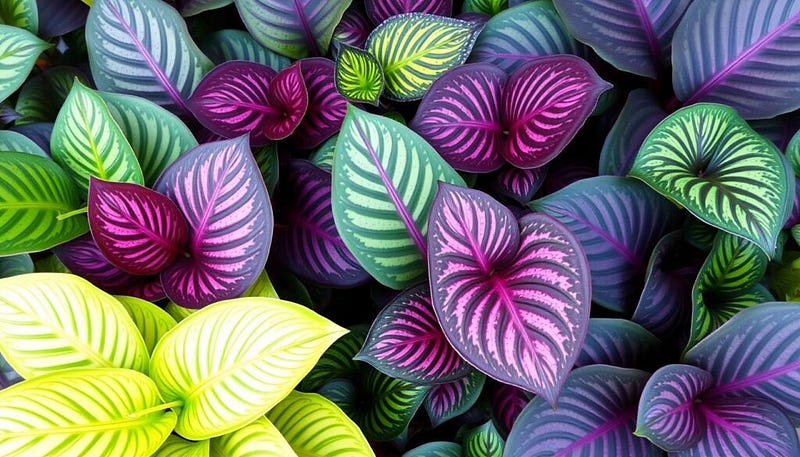
Calathea Couture: More Than Just a Pretty Face
Calathea plants are known for their beautiful leaves. But they also have a cool trick — they can do a leaf dance. This is called nyctinasty and is a special feature of the Calathea family. They are part of the Marantaceae group, which includes the popular prayer plants.
When the sun goes down, Calathea leaves start to move. They fold up at the base of the leaf stalk. This happens because of changes in water pressure in the swollen nodes, or pulvini, at the leaf base.
During the day, the leaves move down to follow the sun. This helps them catch more light and save water. It’s a clever way for them to survive.
The Calathea zebrina has striking zebra-like patterns. The Calathea lancifolia, or “Rattlesnake Plant,” has unique leaves. These plants come in many shapes, sizes, and colors. But their best feature is their nightly “prayer” routine, where they fold their leaves up.
This nightly movement is not just for show. It helps the plants live well in their tropical homes. By understanding Calathea nyctinasty, we can connect more with these amazing plants. We can see the beauty of the Calathea couture collection.
“The daily dance of Calathea leaves is a captivating reminder that these plants are more than just a pretty face. Their ability to respond to the changing light conditions is a testament to the remarkable adaptations of the natural world.”
Mastering the Art of Calathea Care
Caring for your calathea couture plants is all about finding the right balance. They need the right amount of light, water, and humidity to thrive. Knowing what they need will keep your plants looking great for years.
Light Requirements for a Flourishing Calathea
Calatheas do best in medium to bright indirect light. They can handle low indirect light too. But, they shouldn’t get direct sunlight, as it can burn their leaves. With the right light, your plants will show off their beautiful leaves and colors.
Watering Habits for a Happy Calathea
Calatheas like their soil to be consistently moist but not soggy. Water them every 1–2 weeks, letting the soil dry a bit before watering again. The amount of water needed can change based on how much light they get and the season. In brighter spots, they need more water, while in dimmer areas, they need less.
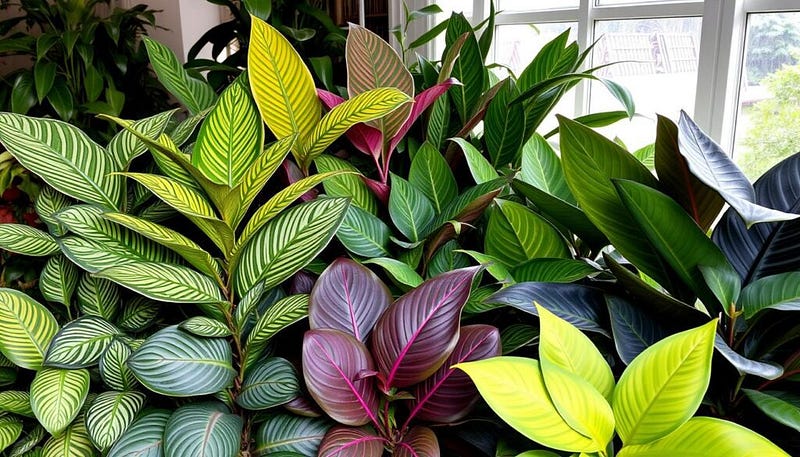
The Humidity Factor: Calatheas’ Secret to Thriving
If you own a calathea couture plant, you know they love humid places. These plants come from the tropical rainforests of Brazil. Keeping them happy means knowing how important humidity is.
Calatheas need moist soil and like the air to be humid. You can use humidifiers, pebble trays, or mist them regularly. The right humidity helps them grow well and look their best.
Right humidity makes your calathea couture plants look great. They’ll have lush leaves and won’t curl or turn brown. Use a humidifier or a pebble tray to keep the air moist. You’ll see your plants flourish.
“Maintaining the proper humidity is essential for the health and growth of calathea plants. These tropical beauties require consistent moisture in the air to truly thrive.”
Knowing what humidity your calathea couture needs helps them thrive. With the right conditions, you’ll enjoy their beauty for many years.
Temperature Preferences: Keeping Calatheas Comfortable
Calathea couture, a popular genus of prayer plants, thrive in a specific temperature range. They prefer warm and consistent temperatures, between 65°F and 85°F (18°C to 30°C). This range mimics their natural habitat, ensuring they flourish in your indoor garden.
It’s crucial to avoid exposing your calatheas to temperatures below 60°F (15°C). This can cause cold damage and potentially harm the delicate leaves. Maintaining a stable, comfortable temperature is essential for their health and well-being.
Whether you’re cultivating the striking Calathea zebrina or the intriguing Calathea lancifolia, providing the right temperature is key. By understanding the temperature preferences of your calathea couture, you can create an environment for them to thrive.
“Calatheas are tropical beauties that require a bit of extra care, but the rewards of their mesmerizing leaf patterns are well worth the effort.”
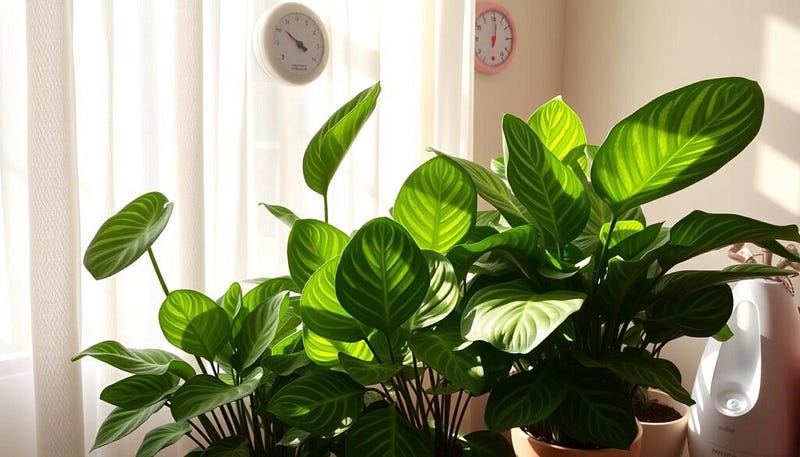
By keeping your calatheas comfortable within their preferred temperature range, you’ll be well on your way to nurturing a flourishing indoor oasis. Embrace the challenge of providing the right conditions, and enjoy the visual delight these plants bring to any space.
Soil Secrets: The Perfect Potting Mix for Calatheas
Caring for your calathea couture plants starts with the right soil. Calatheas need well-draining, nutrient-rich soil that holds just the right moisture. If you ignore their soil needs, your plants might not be happy or healthy.
To make the perfect potting mix for your calathea plants, look for these ingredients:
- Compost — It gives essential nutrients and makes the soil better.
- Pine bark — It helps with drainage and air.
- Coco coir — It keeps moisture without making the soil too wet.
- Worm castings — It adds good microbes and slow-release nutrients.
- Perlite — It helps with drainage and stops the soil from getting too dense.
The best calathea potting mix is well-aerated. It should drain well but still keep enough moisture for your prayer plant varieties and types of calathea. Stay away from dense soils that can cause root rot and other problems.
“The right soil is the foundation for a healthy, vibrant calathea couture plant.”
It’s important to let the soil dry a bit between waterings. This way, you find the perfect balance. With the right calathea soil and calathea care, your calathea plants will show off their beautiful leaves and fascinating leaf movements.
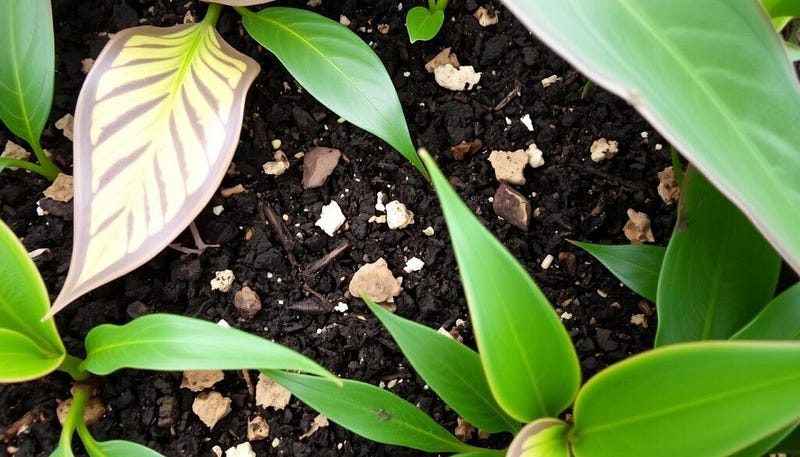
Common Calathea Challenges and Solutions
Calathea couture plants are easy to care for but can face common problems. Knowing how to address these issues helps your plants stay healthy and beautiful.
Wilting and Curling Leaves: Addressing Underwatering
Wilting or curling leaves often mean your calathea needs more water. These plants love moist soil, as they come from tropical rainforests. If the soil gets too dry, leaves will droop and curl to save water. To fix this, water your calathea often, keeping the soil just right.
Yellowing Leaves: Overwatering Alert
Yellow leaves can mean your calathea is getting too much water. Too much water can cause root rot, stopping the plant from getting what it needs. If leaves turn yellow, water less and let the soil dry a bit before watering again. Using distilled or filtered water can also prevent mineral buildup that harms leaves.
By knowing how to handle calathea problems and adjusting your care, your prayer plant varieties and types of calathea will flourish. They’ll show off their stunning leaves for you to enjoy.
Pet-Friendly Beauties: Calatheas for Fur-Baby Homes
If you have pets, calathea plants are great friends for your home. These plants are safe for cats and dogs. They are non-toxic, making them perfect for homes with pets.
Calathea plants are safe for pets. They have beautiful leaves and patterns. This adds elegance to your home without danger to pets.
Choose from many calathea types like calathea zebrina or calathea lancifolia. These plants are great for pet-friendly homes. They bring beauty and safety to your space.
Add calathea plants to your home for beauty and safety. They are perfect for pet-friendly spaces.
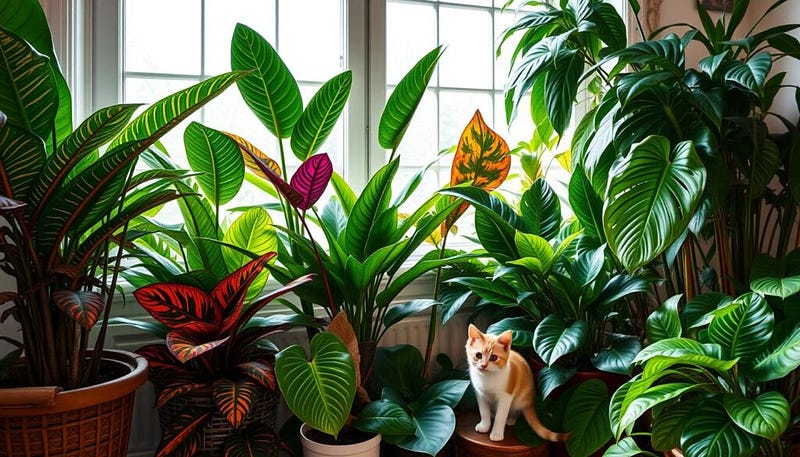
Calathea Couture Varieties to Add to Your Collection
The Calathea couture collection has many stunning varieties to make your indoor space beautiful. With around 60 species, some have become favorites among plant lovers. Let’s look at two amazing Calathea couture varieties you should consider.
Calathea crocata: The Blooming Stunner
The Calathea crocata is a rare gem that blooms indoors. Its burgundy leaves create a dramatic look, and its orange flowers are a sight to see. These flowers can brighten your home for months, making it a standout plant.
Calathea makoyana: The Cathedral Window Plant
The Calathea makoyana, or cathedral window plant, is another beauty in the Calathea couture collection. Its pale green, striped leaves look like stained glass when lit from behind. This plant’s unique look makes it a great conversation starter.
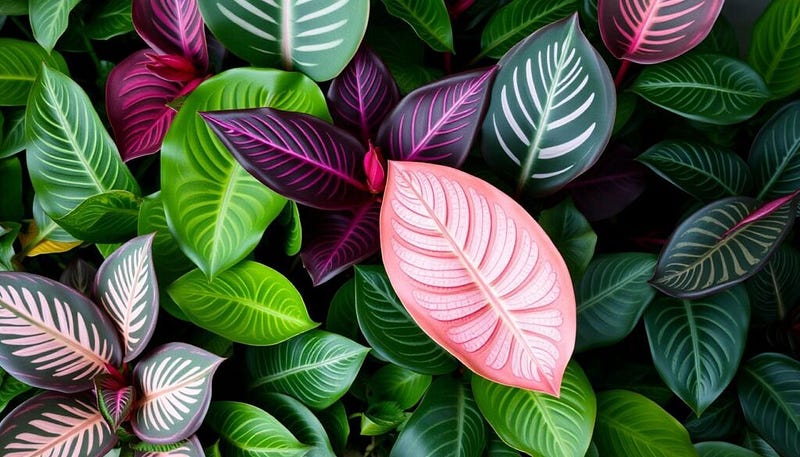
“Calathea couture varieties are not only visually stunning but also offer a unique touch of tropical elegance to any indoor space.”
Whether you love the Calathea crocata’s vibrant blooms or the Calathea makoyana’s stunning leaves, these varieties will add beauty to your collection.
Where to Buy Calathea Couture Plants
Looking to add Calathea Couture plants to your home? You’re in luck. These beautiful prayer plants are available from many online nurseries and retailers. They specialize in unique houseplants.
Online Calathea Nurseries and Retailers
Online is a great place to find many Calathea varieties. Nurseries and retailers there offer a wide range of Calathea Couture plants. You can find rare and hard-to-find cultivars to add to your collection.
- Exotic Nursery — Offers over 27 Calathea plants in sizes from 2 inches to 20 inches. They have 27 cat-friendly options and 4 rare varieties. It’s a great place for Calathea lovers.
- Green Thumb Oasis — Focuses on tropical houseplants. They have a big selection of Calatheas, including Calathea makoyana and Calathea crocata. Prices are from $8 to $88, with many sizes and light needs.
- Leafy Abode — Provides healthy, high-quality Calathea plants. They ship nationwide and have a user-friendly system to find the right Calathea for your home.
When buying Calatheas online, check the plants for pests or disease. Choose a reputable seller with a good warranty and return policy. With some research, you can find the Calathea Couture plants you want. Then, you can bring their beauty into your home.

Calathea Couture: Bringing Tropical Elegance Home
Make your indoor space more beautiful with Calathea Couture plants. These plants have unique leaf patterns and colors. They turn any room into a peaceful oasis. With the right care, you can enjoy their beauty for many years.
Calathea Couture plants love bright, indirect light. They show off their vibrant colors and designs. You can find plants like Calathea Zebrina with zebra stripes or Calathea Roseopicta with soft pink leaves. They bring elegance to any room.
To keep your Calathea Couture plants healthy, watch their water needs and humidity levels. The right conditions help them stay green and vibrant. This makes your space more inviting.
“Calathea Couture plants are the perfect way to bring a touch of tropical charm to your home, transforming any room into a lush, serene sanctuary.”
Adding Calathea Couture to your home mixes nature with design. These plants fit many decor styles, from modern to traditional. They’re easy to care for and add a tropical feel to your space.
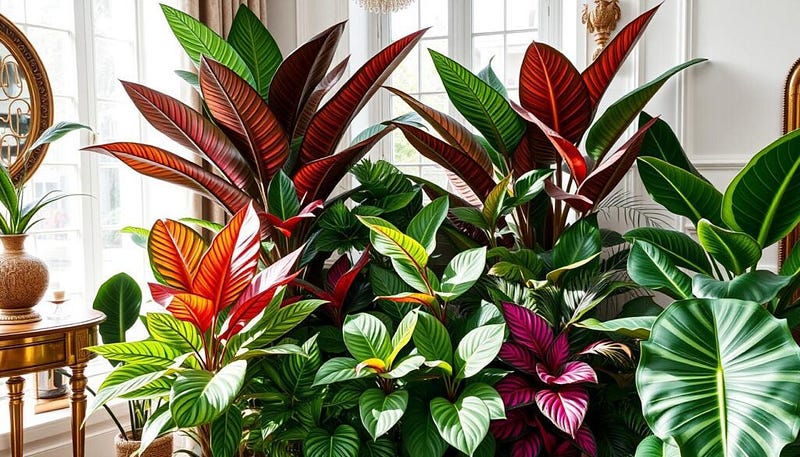
Discover the charm of Calathea Couture plants. They bring a tropical oasis to your home. Their stunning leaves and colors make them the highlight of any room, bringing peace and beauty.
Conclusion
Calathea Couture plants are a joy for indoor gardeners. They come in stunning varieties that can brighten any room. To keep them thriving, you need to know about humidity, light, and soil.
Each variety, like the Calathea zebrina or Calathea makoyana, has its own charm. They can add beauty to any space. Whether you love stripes or unique patterns, there’s a calathea for you.
Keeping your calathea healthy means watching temperature, watering, and soil. These plants are safe for pets and add elegance to your home. They make your indoor space feel like a tropical paradise.
Start your calathea journey with care. Watch out for problems like wilting or yellow leaves. Quick action can keep your plants looking great.
By giving your calatheas the right care, you’ll get lush, vibrant plants. They’ll impress everyone who sees them. Enjoy the beauty of calathea couture in your home.
FAQs
What is the Calathea couture plant?
Calathea couture is a type of plant known for its unique leaf movements. It belongs to the ‘prayer plant’ family, Marantaceae. These plants are popular for their beautiful leaves.
What are the different varieties of Calathea couture plants?
The Calathea couture collection has many varieties. For example, the Calathea crocata has burgundy leaves and orange flowers. The Calathea makoyana, or cathedral window plant, has pale green, striped leaves that look translucent when backlit.
How do Calathea plants move their leaves?
Calatheas move their leaves up at night and down during the day. This is called nyctinasty. They do this by changing water pressure in the leaf nodes.
What are the ideal growing conditions for Calathea couture plants?
Calatheas need medium to bright indirect light. They like consistent moisture and high humidity. They also prefer temperatures between 65°F-85°F and should avoid cold drafts.
How do I care for a Calathea couture plant?
Water your Calathea every 1–2 weeks, letting the soil dry halfway. They need medium to bright indirect light and high humidity. Use a well-draining potting mix and keep them away from cold temperatures.
Are Calathea couture plants safe for pets?
Yes, Calathea couture plants are safe for pets. They are non-toxic and pet-friendly. However, it’s still important to keep them out of reach of pets and small children.
Where can I purchase Calathea couture plants?
You can buy Calathea couture plants at garden centers, nurseries, and online. Look for reputable online nurseries and retailers with a wide variety of Calatheas.







